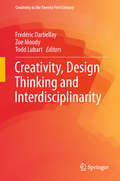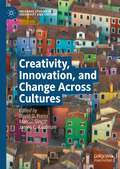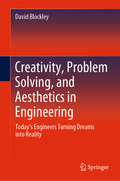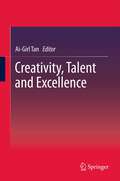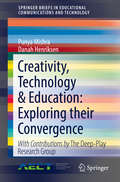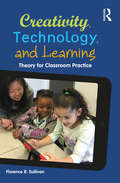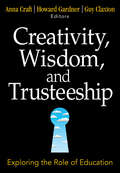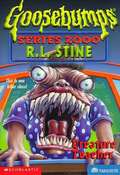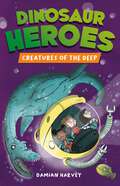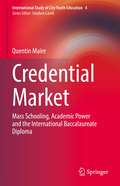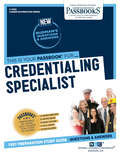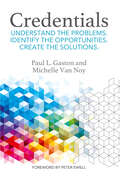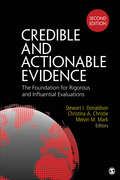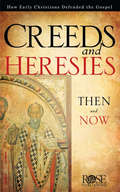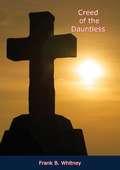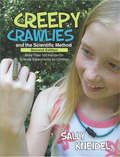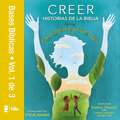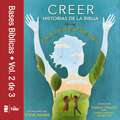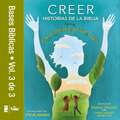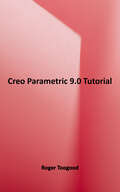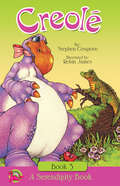- Table View
- List View
Creativity, Design Thinking and Interdisciplinarity (Creativity in the Twenty First Century)
by Frédéric Darbellay Zoe Moody Todd LubartThis book, at the crossroads of creativity, design and interdisciplinary studies, offers an overview of these major trends in scientific research, society, culture and economics. It brings together different approaches and communities around a common reflection on interdisciplinary creative design thinking. This collective effort provides a unique dialogical and convergent space that deals with the challenges and opportunities met by researchers and practitioners working on design thinking, creativity and inter- and transdisciplinarity, or at the interface between these areas.
Creativity, Innovation, and Change Across Cultures (Palgrave Studies in Creativity and Culture)
by James C. Kaufman Marcos Singer David D. PreissThis book offers interdisciplinary, multicultural, and international perspectives on the interrelation between culture, innovation, change and creative forces. Its wide-ranging contributions present theoretical and empirical approaches and with reference to different domains across disciplines including psychology, education, social sciences, humanities, and engineering. The authors demonstrate how urgent social, environmental, technological, and economic challenges can benefit from individual, and community creativity to effect change. In this volume, “culture” refers to sociocultural differences, educational culture, media culture, organizational culture, technological culture, ethnic differences within a culture, and digital culture. Its contributors offer fresh insights on how creativity, innovation, and change can propel us forward and offer hope for the future across these many different forms of culture. They offer both granular studies of creativity and innovation at work in particular contexts and macro-level discussion on how they affect organizational culture, the culture of a discipline and society at large. This cross-cultural analysis of creativity, innovation and approaches to change will particularly appeal to practitioners and researchers in the fields of psychology, organizational behavior and education.
Creativity, Problem Solving, and Aesthetics in Engineering: Today's Engineers Turning Dreams into Reality
by David BlockleyThis book illuminates what engineering is and how it relates to other disciplines such as art, architecture, law, economics, science, technology, and even religion. The author explains, from an intrinsic as well as descriptive perspective, why engineering is essential for our collective well-being, and how, like medicine, it is undertaken by people, and for people, to improve the human condition. He brings out the 'magic' of engineering practice as well as addressing the darker aspects such as warfare and the misuse of the internet. A too commonly held view assumes that the practice of engineers is a cold, purely quantitative and wholly technical enterprise of applying know science, and devoid of creativity or aestheticism. In 2013 the United States National Academy of Engineering launched a campaign called “Changing the Conversation, Messages for Improving Public Understanding of Engineering” with four messages to impart about engineers: that they make a world of difference; are creative problem solvers; that they help shape the future, and are essential to health, happiness, and safety. In this volume, Professor Blockley incorporate these messages into an engaging exposition of engineering accomplishment in all of its evolving diversity, from the technician to the academic research engineer, illustrating the continuum of thinking and purpose from the fixer of the gas boiler to the designers of the A380 and the iPhone.
Creativity, Talent and Excellence
by Ai-Girl TanThis volume reflects the multiplicity of perspectives in the theory and practice of creativity, while it is broadly accepted that the dynamism of humanity's responses to our evolving scientific, social and environmental needs depends on our creativity. It examines the central issues that animate the themes of creativity, talent development and excellence in schools and in the workplace, as well as analysing their related socio-cultural activities and processes. Forged in the workshops of a number of conferences and symposia, this collection represents in itself a creative partnership between European and Asian academics. Thus it includes contributions from various cultural and organizational settings, as well as chapters that enhance our conceptual models of creativity in both learning and teaching. The contributing authors recognize that exploring the nature of creativity necessitates a new paradigm in research and praxis in which integration, collaboration, and the synthesis of knowledge and expertise are key factors. Their chapters detail the results of studies relating to to creativity, talent, school excellence, team and goal setting, innovation and organizational excellence, resilience, self-regulation, and personal epistemology. Clearly defined sections take on discrete aspects of the topic that include a vital assessment of the challenges that lie ahead in fostering the creativity, talent and excellence of the young and in doing so, allowing them to play a positive and innovative role in a variety of social contexts.
Creativity, Technology & Education: Exploring their Convergence (SpringerBriefs in Educational Communications and Technology)
by Danah Henriksen Punya MishraIn this collection of beautifully written essays, Mishra, Henriksen, and the Deep-play Research Group challenge myths about technology and creativity, debate time-honored instructional practices, and play with new ideas for schools to care for and nurture, rather than constrain, creativity. These essays are provocative . . . refreshing, [and] insightful --Dr. Yong Zhao, Foundation Distinguished Professor, University of Kansas and Fellow, Mitchell Institute for Health and Education Policy, Victoria University, Australia. What is creativity? Why is it important? What does it look like across different disciplines and contexts? What role does technology play, if any, in the creative process? And finally, what do creativity and technology have to do with education? These are the questions that underlie the collection of articles in this book. These essays provide a broad analytic frame for thinking about creativity, technology and education and describe classroom examples as well as strategies for evaluating creative artifacts and creative environments. All of these are grounded in specific examples from across a wide range of disciplines and contexts--art, mathematics, engineering, computer science, graphic design, architecture, science to name just a few. The final essays take a broader perspective on creativity and technology focusing both on our highly inter-connected YouTube world but also possibilities for the future. Creativity, Technology & Education: Exploring their Convergence is a vital resource for educators and practitioners as they seek to incorporate creative work and thoughtful pedagogy in their personal and professional lives.
Creativity, Technology, and Learning: Theory for Classroom Practice
by Florence R. SullivanCreativity, Technology, and Learning provides a comprehensive introduction to theories and research on creativity in education and, in particular, to the role of digital-learning technologies in enabling creativity across classroom learning environments. Topical coverage includes play, constructionism, multimodal learning and project-/problem-based learning. Creativity is uniquely positioned throughout the book as an integral component of the educational process and also as a foundational aspect of self-actualization, thriving communities, and humane societies.Through in-depth, empirically based discussions of the philosophical, curricular and pedagogical elements of creativity, Sullivan demonstrates how creativity can be fostered across the curriculum through the use of digital-learning technologies in design, personal expression and problem-solving activities.
Creativity, Wisdom, and Trusteeship: Exploring the Role of Education
by Guy Claxton Anna Craft Dr Howard GardnerAn international panel of distinguished experts explores the balance between creativity and wise action, and calls for educators to nurture "wise creativity" in their students.
Creativity: Getting it Right in a Week (Getting it Right in a Week)
by Martin Fautley Victoria KinsellaIs creativity at the heart of your teaching and learning strategies? Do you understand the difference between creative teaching and teaching for creativity? Can you combine creativity with performance and assessment outcomes? This book provides you with practical-led guidance on creative teaching, teaching for creativity and creative learning. It presents you with the key areas of creativity in straightforward, bite-sized chunks, offering time-saving support and ideas. Designed to be read over a week, the book is divided into seven concise chapters detailing clear strategies aimed at developing creative learners and helping you build a creative learning environment.
Creature Features: Draw Amazing Monsters & Aliens
by Randy MartinezPrepare to scare . . .Open this book, grab a pen, and give life to the monsters that lurk in your imagination. Creature Features shows you how to draw all things creepy, slimy and fantastical. More than 40 step-by-step demonstrations take you from start to finish as you master techniques for drawing the scariest beings on the planet and beyond, including dragons, zombies, vampires, aliens, demons, werewolves and many more.Author Randy Martinez takes a no-fear approach to drawing. As an officially licensed artist for Lucasfilm, Ltd., he's mastered the art of drawing full-color images of some of your most favorite creatures from popular comics and films. Taking it one step at a time, you'll be drawing like a pro right down to the last detail—from evil eyes and terrifying teeth to pointy nails and sharp scales.With Creature Features, being freaky has never been more fun. Get in touch with your dark side, and get drawing today!
Creature Teacher (Goosebumps Series 2000 #3)
by R. L. StineShe's not going to give you detention. She's not going to give you a bad grade. She's going to eat you! Welcome to a new millennium of fear--2,000 times the scares!
Creatures of the Deep (Dinosaur Heroes)
by Damian HarveyJoin our team of Heroes in this fast-paced, dinosaur-themed chapter book as they undertake a daring seep sea rescue to locate a missing submersible ...Great for readers age 7+ these adventure stories are also full of fascinating facts about dinosaurs.These illustrated chapter books are perfect for bringing dinsoaur and science facts to young readers, inspiring a thirst for knowledge and learning by stealth. The team of characters come from around the world to give a truly global outlook, too.
Credential Market: Mass Schooling, Academic Power and the International Baccalaureate Diploma (International Study of City Youth Education #4)
by Quentin MaireThis book makes an original contribution to credential sociology by analysing how high school certificates become and remain valuable in a context of mass high school participation (i.e. credentialism). Building on a detailed analysis of the International Baccalaureate (IB) Diploma, a senior secondary school certificate offered in over 150 countries, Quentin Maire argues that the advent of new private credentials can be understood as a phenomenon of credential stratification in a context of intensified academic competition.Using original data on high school credentials in Australia and internationally, the author makes a strong case for certificates to be studied relationally, by locating them in the credentialing structures in which they are inserted. He systematically applies the comparative method to explain the role of the curriculum, family resources, school segregation and higher education selection in creating a credential hierarchy. His robust combination of theoretical construction and detailed empirical work allows him to offer new insights into social inequality in education systems, credential theory and the IB Diploma.
Credentialing Specialist: Passbooks Study Guide (Career Examination Series)
by National Learning CorporationThe Credentialing Specialist Passbook® prepares you for your test by allowing you to take practice exams in the subjects you need to study. It provides hundreds of questions and answers in the areas that will likely be covered on your upcoming exam.
Credentials: Understand the problems. Identify the opportunities. Create the solutions.
by Paul L. Gaston Michelle Van NoyThe credentials environment grows more complicated by the day, but key questions help us understand why we need this book to help us grapple with those complexities: • Given the expansion in the variety of higher education credentials and in approaches to earning them, why are so many students disappointed with their post-secondary credentials?• Despite the proliferation of credentials tailored to specific careers, why do so many employers complain that the preparation of their new hires is inadequate? • Despite their investment in new programs meant to attract new enrollees, why are so many colleges and universities facing issues with student persistence, timely credential completion, and career success?The plan of the book reflects the authors’ practical aim. In the first of three parts, they offer a broad view of the credentials environment—how credentials work, how a proliferation in credentials has created an unprecedented array of educational choices, and why this abundance is a mixed blessing. In the second part, they focus on categories of credentials, from the associate degree to doctoral degrees to non-degree credentials. The book concludes with two chapters that consider the implications of the information the authors provide for leadership in volatile times: one discusses the importance of maintaining a priority on equity; the other offers 12 propositions for action. To help make the book useful, each chapter begins with a paragraph that summarizes the emphases to follow, and ends with a list of initiatives, i.e., “takeaways,” that leaders (and those attentive to what leaders are doing) should consider.
Credible and Actionable Evidence: The Foundation for Rigorous and Influential Evaluations
by Stewart I. Donaldson Melvin M. Mark Christina A. ChristieAddressing one of the most important and contentious issues challenging applied research and evaluation practice today—what constitutes credible and actionable evidence?—this volume offers a balanced and current context in which to analyze the long-debated quantitative-qualitative paradigms. In the Second Edition, the contributors, a veritable "who’s who" in evaluation, discuss the diversity and changing nature of credible and actionable evidence; offer authoritative guidance about using credible and actionable evidence; explain how to use it to provide rigorous and influential evaluations; and include lessons from their own applied research and evaluation to suggest ways to address the key issues and challenges. Reflecting the latest developments in the field and covering both experimental and non-experimental methods, the new edition includes revised and updated chapters, summaries of strengths and weaknesses across varied approaches, and contains diverse definitions of evidence. Also included are two new chapters on assessing credibility and synthesizing evidence for policy makers. This is a valuable resource for students and others interested in how to best study and evaluate programs, policies, organizations, and other initiatives designed to improve aspects of the human condition and societal well-being.
Credible and Actionable Evidence: The Foundation for Rigorous and Influential Evaluations
by Stewart I. Donaldson Melvin M. Mark Christina A. ChristieAddressing one of the most important and contentious issues challenging applied research and evaluation practice today—what constitutes credible and actionable evidence?—this volume offers a balanced and current context in which to analyze the long-debated quantitative-qualitative paradigms. In the Second Edition, the contributors, a veritable "who’s who" in evaluation, discuss the diversity and changing nature of credible and actionable evidence; offer authoritative guidance about using credible and actionable evidence; explain how to use it to provide rigorous and influential evaluations; and include lessons from their own applied research and evaluation to suggest ways to address the key issues and challenges. Reflecting the latest developments in the field and covering both experimental and non-experimental methods, the new edition includes revised and updated chapters, summaries of strengths and weaknesses across varied approaches, and contains diverse definitions of evidence. Also included are two new chapters on assessing credibility and synthesizing evidence for policy makers. This is a valuable resource for students and others interested in how to best study and evaluate programs, policies, organizations, and other initiatives designed to improve aspects of the human condition and societal well-being.
Creed & Heresies: Then and Now
by Rose PublishingThis beautiful eBook contains the full text of the Apostles Creed and Nicene Creed, and explains why they are important to learn today. In 14 pages you will take a simple easy-to-understand look back to the historical teachings of the church, and bring them to life for today's believers. During the time of the early church (AD 30-AD 400) some key beliefs were misunderstood by Gnostics and other religious groups. Some people couldn't tell the difference between the teachings of Jesus' apostles and the notions that were common in society. It was important to put together short summaries of the essential doctines of the faith. Many of the phrases were written to address particular false beliefs. The eBook shows that many of the questionable teachings of 2000 years ago are still around. Understanding how the church dealt with these issues in the past helps us to deal with those same issues today. A clear simple explanation of the church's response to ancient heresies, many of which are common in today's cultic groups and other religions.CHART 1Concise easy-to-understand chart with explanations of these groups. They are important to know because so many modern heresies are similar to them. Without a chart such as this, it is difficult to tell the truth from an incorrect belief because groups use the same terms.*Docetism*Ebionitism*Adoptionism*Manicheanism*Marcionism*Modalism*Montanism*Apollinarianism*Arianism*Macedonianism*Pelagianism*NestorianismCHARTS 2, 3 and 4These charts explain each part of the three Creeds line by line and give Bible references for each phrase.*Apostles Creed*Nicene CreedCHART 5Side-by-side comparison of Gnostic and Christian beliefs on:*Jesus, Salvation, Origin of Evil*Cosmonogy (origin of the universe) and Cosmology (the nature, order, and function of the universe)This eBook will make the Creeds come alive. It takes important concepts and makes them clear and understandable for youth, college, and adults.Ideas for using this eBook:*Confirmation and baptism and communion-preparation classes*Parents of confirmation students*Teacher training on the basic beliefs of Christianity*Personal devotional reading*Small group or Bible studyCopy Reader's Note: I loved reading this eBook because it answers the question: "How would I summarize the key teachings of Christianity in one 2-minute explanation?" Have you ever tried it with someone from another country? It's really tough to go through Christian beliefs and word them just right. The Creeds were the ancient version of today's "elevator pitch." It was the two-minute clarification of what Christians believed and what they didn't.
Creed of the Dauntless
by Frank WhitneyCreed of the Dauntless, which was originally published in 1931, is a presentation of constructive thought and principles for those who would be undaunted, unaffected by adverse beliefs or by external things, victorious in the realization of their innate power to overcome.
Creepy Classroom (Orca Shivers #1)
by François GravelKey Selling Points Matt finds himself prisoner of a creepy librarian with a terrifying plan in this dark, weird and a bit gruesome horror novel for middle-grade readers that is reminiscent of Goosebumps. This is the first book in the Orca Shivers series, a series that will thrill readers with spine-tingling tales of horror, suspense and mystery. These fast-paced novels with intriguing original illustrations are a great high-interest choice for middle-grade readers. Francois Gravel's books have won the Mr. Christie’s Book Award, the TD Canadian Children’s Literature Award, the Governor General’s Literary Award for French-language children’s literature, and been selected for the IBBY Honour List.
Creepy Crawlies and the Scientific Method
by Sally KneidelFrom monarch butterflies to hissing cockroaches, Creepy Crawlies and the Scientific Method, Second Edition shows teachers and parents how to use bugs, insects and critters to teach children the five steps of the scientific method: question, hypothesis, methods, result, and conclusion. Focusing on fun as well as education, and operating on the premise that doing is learning, Creepy Crawlies offers more than 100 different activities which will ignite children's curiosity while also building foundations for critical thinking and scientific understanding. This classroom-tested collection of experiments is a perfect resource for teachers or just an afternoon of educational fun at home. The second edition includes updated content and four new insect species: the monarch butterfly, the black swallowtail butterfly, the bessbug, and the Madagascar hissing roach!Sally Kneidel, PhD, grew up next to a small creek and experienced crawling creatures at an early age. Her interest led her to ultimately pursue a PhD in biology from the University of North Carolina-Chapel Hill. Kneidel has now taught for more than fifteen years, including college biology courses and writing classes. She writes on a variety of science topics, ranging from health to wildlife conservation, has published numerous other books, and has won several awards for writing, blogging, and photography. The first edition of this book, and the sequel to it, were both named in Science Books & Films' "Best Books for Children" list.
Creer - Historias de la Biblia, Vol. 1: Pensar, actuar y ser como Jesús
by Randy FrazeeEl libro Creer -Historias de la Biblia, presentado por el autor de best sellers y pastor Randy Frazee, les enseña a los niños de cuatro a ocho años de edad a pensar y actuar como Jesús, y parecerse más a Él. Con sesenta historias tomadas de la Biblia que presentan los distintos temas, combinados con cautivadoras y dramáticas ilustraciones, inspirará a los niños para que se conviertan en las personas que Dios quiere que sean.El libro Ceer -Historias de la Biblia forma parte del programa nacional dirigido a todos los miembros de las iglesias, dirigido por el autor de best sellers Randy Frazee. Su propósito es enseñarles a los niños a pensar y actuar como Jesús, y parecerse más a Él.
Creer - Historias de la Biblia, Vol. 2: Pensar, actuar y ser como Jesús
by Randy FrazeeEl libro Creer -Historias de la Biblia, presentado por el autor de best sellers y pastor Randy Frazee, les enseña a los niños de cuatro a ocho años de edad a pensar y actuar como Jesús, y parecerse más a Él. Con sesenta historias tomadas de la Biblia que presentan los distintos temas, combinados con cautivadoras y dramáticas ilustraciones, inspirará a los niños para que se conviertan en las personas que Dios quiere que sean.El libro Ceer -Historias de la Biblia forma parte del programa nacional dirigido a todos los miembros de las iglesias, dirigido por el autor de best sellers Randy Frazee. Su propósito es enseñarles a los niños a pensar y actuar como Jesús, y parecerse más a Él.
Creer - Historias de la Biblia, Vol. 3: Pensar, actuar y ser como Jesús
by Randy FrazeeEl libro Creer -Historias de la Biblia, presentado por el autor de best sellers y pastor Randy Frazee, les enseña a los niños de cuatro a ocho años de edad a pensar y actuar como Jesús, y parecerse más a Él. Con sesenta historias tomadas de la Biblia que presentan los distintos temas, combinados con cautivadoras y dramáticas ilustraciones, inspirará a los niños para que se conviertan en las personas que Dios quiere que sean.El libro Ceer -Historias de la Biblia forma parte del programa nacional dirigido a todos los miembros de las iglesias, dirigido por el autor de best sellers Randy Frazee. Su propósito es enseñarles a los niños a pensar y actuar como Jesús, y parecerse más a Él.
Creo Parametric 9.0 Tutorial
by Roger ToogoodThe eleven lessons in this tutorial introduce you to the design capabilities of Creo Parametric 9.0. The tutorial covers the major concepts and frequently used commands to advance from a novice to an intermediate user level. Major topics include part and assembly creation and the creation of engineering drawings. Also illustrated are the major functions that make Creo Parametric a parametric solid modeler. Although the commands are presented in a click-by-click manner, an effort has been made, in addition to showing/illustrating the command usage, to explain why certain commands are being used and the relation of feature selection and construction to the overall part design philosophy. Simply knowing where commands can be found is only half the battle. As is pointed out numerous times in the text, creating useful and effective models of parts and assemblies requires advance planning and forethought. Moreover, since error recovery is an important skill, considerable time is spent exploring the created models. In fact, some errors are intentionally induced so that users will become comfortable with the "debugging" phase of model creation. At the end of each lesson is a short quiz reviewing the new topics covered in that chapter. Following the quiz are several simple "exercise" parts that can be created using new commands taught in that lesson. In addition to these, an ongoing project is also included throughout the book. This project consists of several parts that are introduced with the early lessons and finally assembled at the end. Who this book is for This book has been written specifically with students in mind. Typically, students enter their first CAD course with a broad range of abilities, both in spatial visualization and computer skills. The approach taken here is meant to allow accessibility to persons of all levels. These lessons, therefore, were written for new users with no previous experience with CAD, although some familiarity with computers is assumed.
Creole
by Stephen Cosgrove Robin JamesCreole is a unique creature who lives alone in the swamp. She lives alone because the other creatures that live there are frightened by her looks. Looks can be deceiving and so can judging a book by its cover. Ages 5-9.
